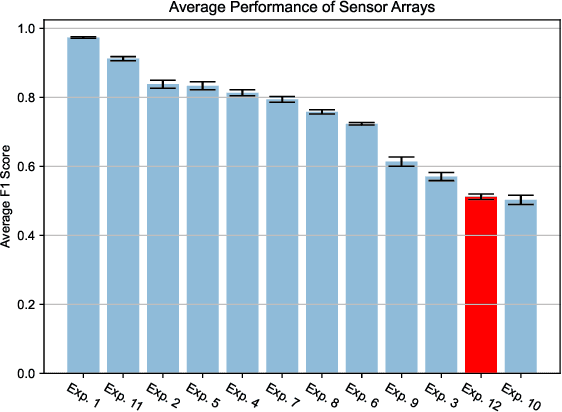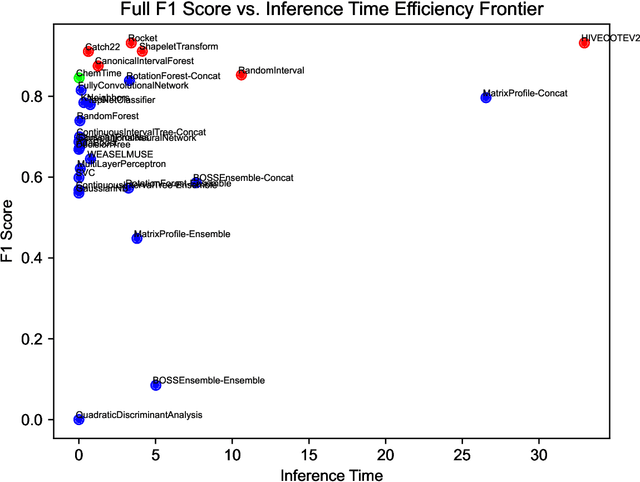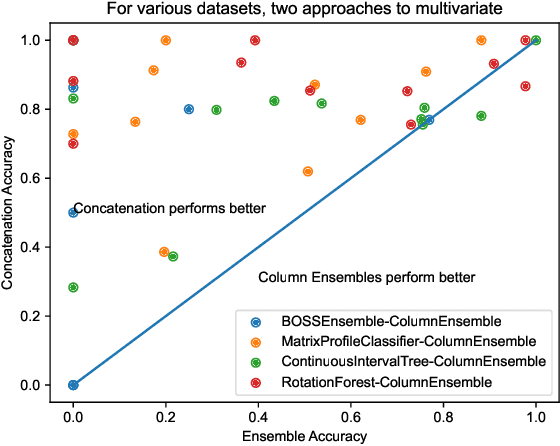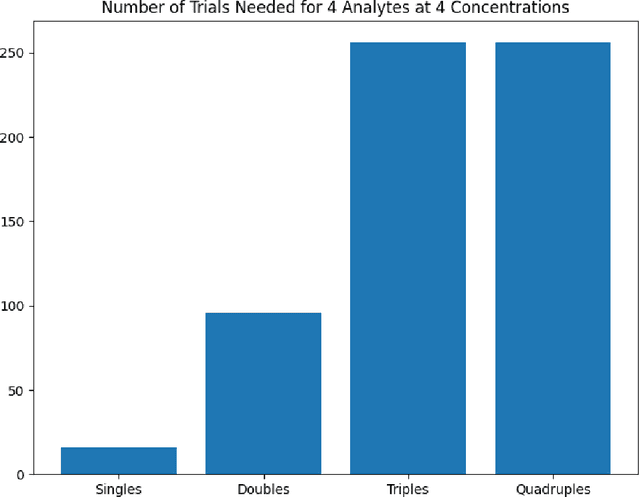Alexander M. Moore
ChemTime: Rapid and Early Classification for Multivariate Time Series Classification of Chemical Sensors
Dec 15, 2023



Abstract:Multivariate time series data are ubiquitous in the application of machine learning to problems in the physical sciences. Chemiresistive sensor arrays are highly promising in chemical detection tasks relevant to industrial, safety, and military applications. Sensor arrays are an inherently multivariate time series data collection tool which demand rapid and accurate classification of arbitrary chemical analytes. Previous research has benchmarked data-agnostic multivariate time series classifiers across diverse multivariate time series supervised tasks in order to find general-purpose classification algorithms. To our knowledge, there has yet to be an effort to survey machine learning and time series classification approaches to chemiresistive hardware sensor arrays for the detection of chemical analytes. In addition to benchmarking existing approaches to multivariate time series classifiers, we incorporate findings from a model survey to propose the novel \textit{ChemTime} approach to sensor array classification for chemical sensing. We design experiments addressing the unique challenges of hardware sensor arrays classification including the rapid classification ability of classifiers and minimization of inference time while maintaining performance for deployed lightweight hardware sensing devices. We find that \textit{ChemTime} is uniquely positioned for the chemical sensing task by combining rapid and early classification of time series with beneficial inference and high accuracy.
ChemVise: Maximizing Out-of-Distribution Chemical Detection with the Novel Application of Zero-Shot Learning
Feb 09, 2023



Abstract:Accurate chemical sensors are vital in medical, military, and home safety applications. Training machine learning models to be accurate on real world chemical sensor data requires performing many diverse, costly experiments in controlled laboratory settings to create a data set. In practice even expensive, large data sets may be insufficient for generalization of a trained model to a real-world testing distribution. Rather than perform greater numbers of experiments requiring exhaustive mixtures of chemical analytes, this research proposes learning approximations of complex exposures from training sets of simple ones by using single-analyte exposure signals as building blocks of a multiple-analyte space. We demonstrate this approach to synthetic sensor responses surprisingly improves the detection of out-of-distribution obscured chemical analytes. Further, we pair these synthetic signals to targets in an information-dense representation space utilizing a large corpus of chemistry knowledge. Through utilization of a semantically meaningful analyte representation spaces along with synthetic targets we achieve rapid analyte classification in the presence of obscurants without corresponding obscured-analyte training data. Transfer learning for supervised learning with molecular representations makes assumptions about the input data. Instead, we borrow from the natural language and natural image processing literature for a novel approach to chemical sensor signal classification using molecular semantics for arbitrary chemical sensor hardware designs.
 Add to Chrome
Add to Chrome Add to Firefox
Add to Firefox Add to Edge
Add to Edge